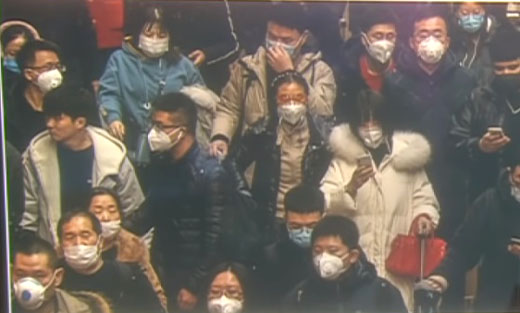Special to WorldTribune.com
 By Donald Kirk
By Donald Kirk
The spread of a deadly disease brings out the best and the worst in people.
Upside, scientists look for causes and cures for the coronavirus, often coordinating through the World Health Organization, while doctors and nurses work tirelessly to care for the sick in hospitals and clinics. Negatively, unfounded fears, bordering on panic, are widespread and difficult to stop. Nobody wants to say it’s not necessary to quarantine travelers from China or shut down factories, schools, theaters and restaurants in case the dreaded disease has any chance of breaking out where never expected.

Then there’s another much worse response. That’s the fear beyond Asia, in the U.S. and Europe, of what the sensational media of more than a century ago called “the yellow peril.” That phrase has fallen into such disuse that it’s unknown to those whom I asked about its meaning. They had never heard this thoroughly racist reference to the color of the skin of anyone of Asian origin as perceived by those those skin is supposedly “white.”
A cursory look at the history shows statesmen and journalists alike blamed “the yellow peril” in denunciations of Chinese in the late 19th century when a host of Western powers were marauding China. The term was popularized in the U.S. as Chinese laborers arrived in large numbers, building railroads and much else for wages below those of Americans. Then, before and during the dark days of World War II, the label was applied to the Japanese enemy.
The term has again come up in TV talk shows and interviews. No, it’s not that anyone on television is denouncing China for spreading “the yellow peril” in the form of the coronavirus from the overcrowded industrial city of Wuhan. Rather, analysts have been expressing fears of a revival of the term as an impression grows that the Chinese are the source of terrible diseases beginning with SARS in 2003. Asian-American commentators in the U.S. have suggested that Americans and Europeans alike are succumbing to old, deeply prejudiced, incendiary stereotypes as the coronavirus shows signs of evolving into a global pandemic.
If we have yet to see politicians warning against the “Yellow Peril,” as they did in the late 1800s, race-based prejudices are still evident. One flagrant example appeared in a French newspaper, “Le Courier Picard,” which ran the headlines “Alert jaune” for “yellow alert” and “Le peril jaune” for “yellow peril.” Just for dramatic effect, a picture of a Chinese woman, her mouth and nose shielded by a white mask, stared at readers below the headlines.
Those of Asian ancestry living abroad are highly sensitive to all they’re seeing and hearing. “Starting the decade with a new brand of Yellow Peril” was the title of a piece by Deborah Kwon in the newspaper of the University of Washington. “How implicit xenophobia plays into our worries about coronavirus,” was the subtitle.
“Some have used the present issue of the coronavirus to push anti-Chinese agendas,” she wrote. “It’s even more telling when you consider the United States’ history of Yellow Peril, the 19th and 20th century fear of the threat of Asian people coming to the Western world. It is continuing today.”
Merely looking Asian, Kwon observed, is enough to have people nearby reaching for hand sanitizers or face masks. “It’s not bad to be worried about coronavirus, but it is important to think about how much of your worry and fear is a result of racializing the virus,” she wrote. “And even if you are really worried about your health, don’t allow yourself to buy into the media hysteria.”
In France, where anti-Semitism against the Jewish community is on the rise and the country’s large Arab minority has frequently clashed with those of purely European extraction, Asians find themselves the target of insults, bullying and critical comments. “Je ne suis pas un virus,” is now a defensive slogan, on-line and on signs, meaning, “I am not a virus.”
Stories of weird responses to Asians are common currency. In Canada, a journalist was fired for tweeting, “Hopefully all I got today was a haircut” along with a picture of his Asian-American barber. In Rome, according to the newspaper “La Repubblica,” the director of a music conservatory banned “oriental students,” including specifically Chinese, Koreans and Japanese, even though many were second or third-generation Italian citizens.
“It’s this idea of the yellow peril,” said a Canadian-Chinese, harking back to a time when the term was in regular usage. Its revival in the global response to coronavirus shows historic prejudices at a time when the sole universal urge should be to combat a disease against which there is as yet no sure defense.
